Interview: Akira Isogawa
Written by Hello Bookcase, Posted in Interviews
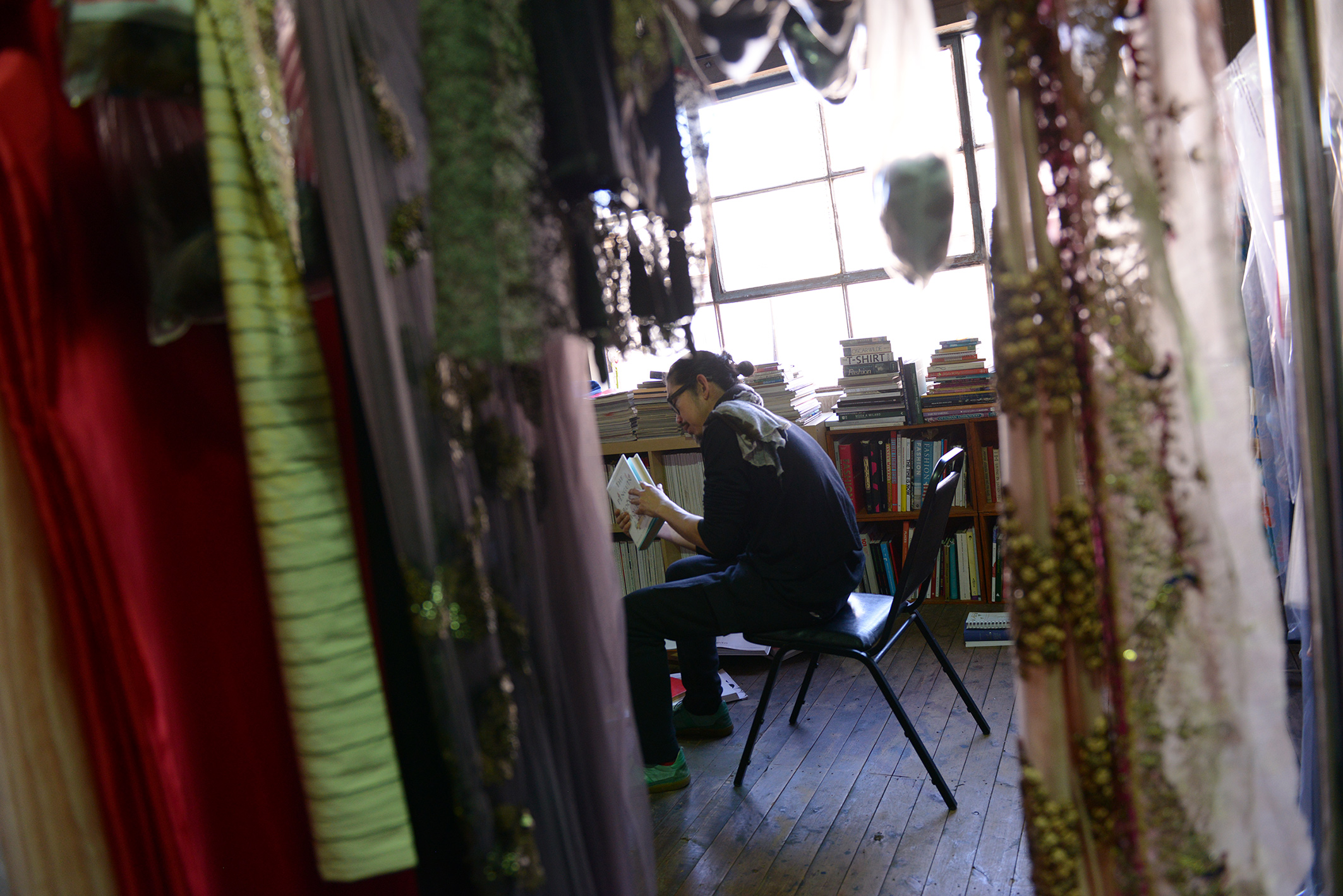 Amongst the exquisite waves of racks filled with archived fashion collections sits a graceful bookcase filled with a book collection that has provided inspiration and filled the heart of fashion designer Akira Isogawa. Books bursting with samurais, landscapes, history and adventures that have influenced some of Akira’s most beautiful creations came alive the morning Akira introduced us to his bookcase.
Amongst the exquisite waves of racks filled with archived fashion collections sits a graceful bookcase filled with a book collection that has provided inspiration and filled the heart of fashion designer Akira Isogawa. Books bursting with samurais, landscapes, history and adventures that have influenced some of Akira’s most beautiful creations came alive the morning Akira introduced us to his bookcase.
For every season when I start thinking about the colour palate or motif I go through Textile Design 11 and Textile Design IV by Kamon Yoshomoto to draw inspiration. I found the books in Kyoto in a bookstore called Maruzen – they also deal in foreign books and it is the oldest bookstore in Japan (established in 1869). Whenever I go back to Japan, I visit Maruzen. I like to draw inspiration from the Kimono designs and these books suggest all sorts of patterns – they were a great find. Every season my team and I develop our own motifs using these books as a source of inspiration.
Fashion Geography by Hamano Yasuhiro is a great book for silhouette – even for accessories and headpieces. It’s another book I use for inspiration –- I have had this book for about 20 years.
I have a few books by Issey Miyake – East meets West explores his early work. Some of his prints were inspired by the Yakuza – he translated the tattoo motif onto textile and in other designs he went a little bit tribal. He is retired now and the responsibility for designing his collection has been passed onto a younger generation. It is quite an interesting book as it also includes interviews with himself and his associates. What I like about his work is that the designs are very fluid – the fabric is almost as though it is alive. 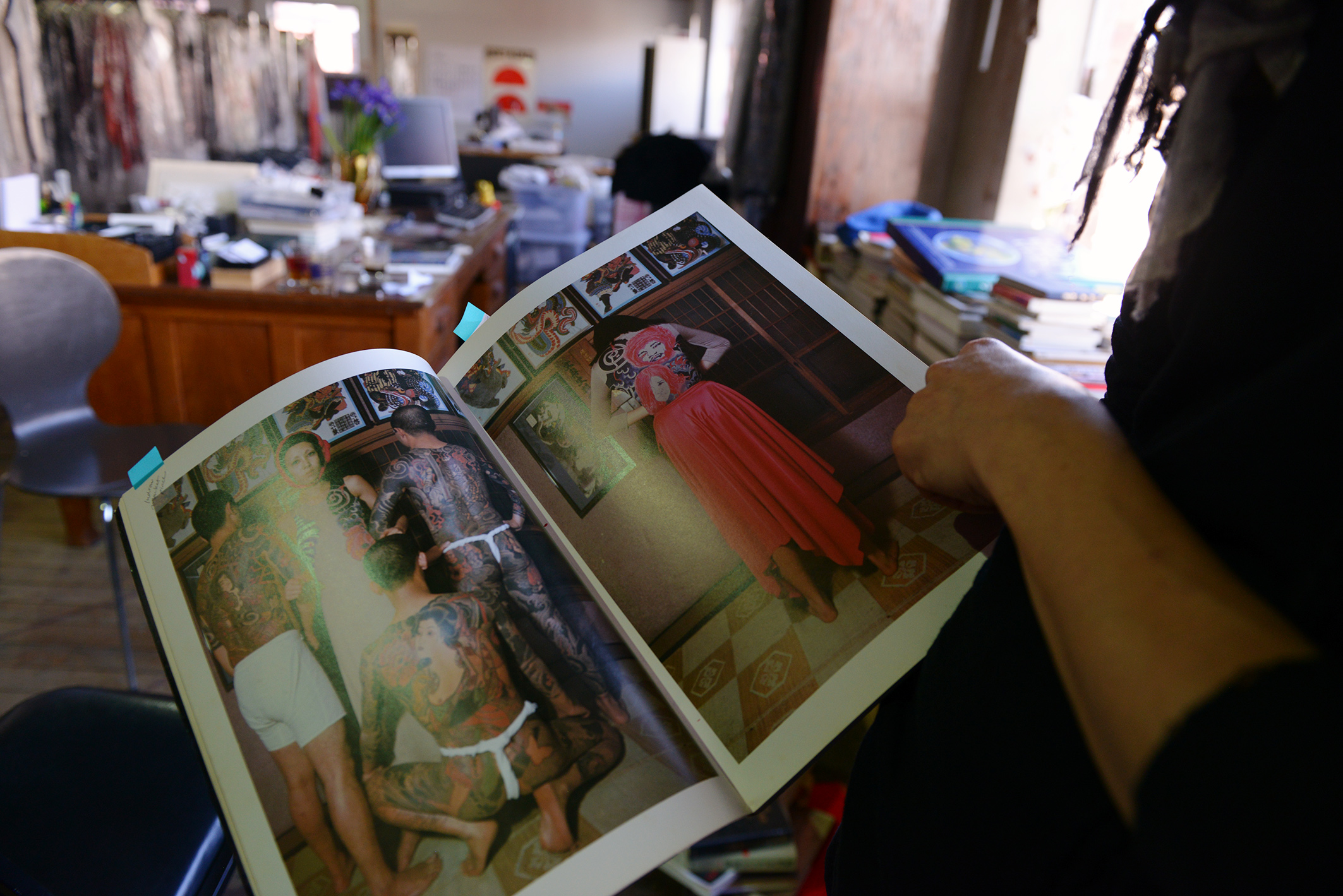
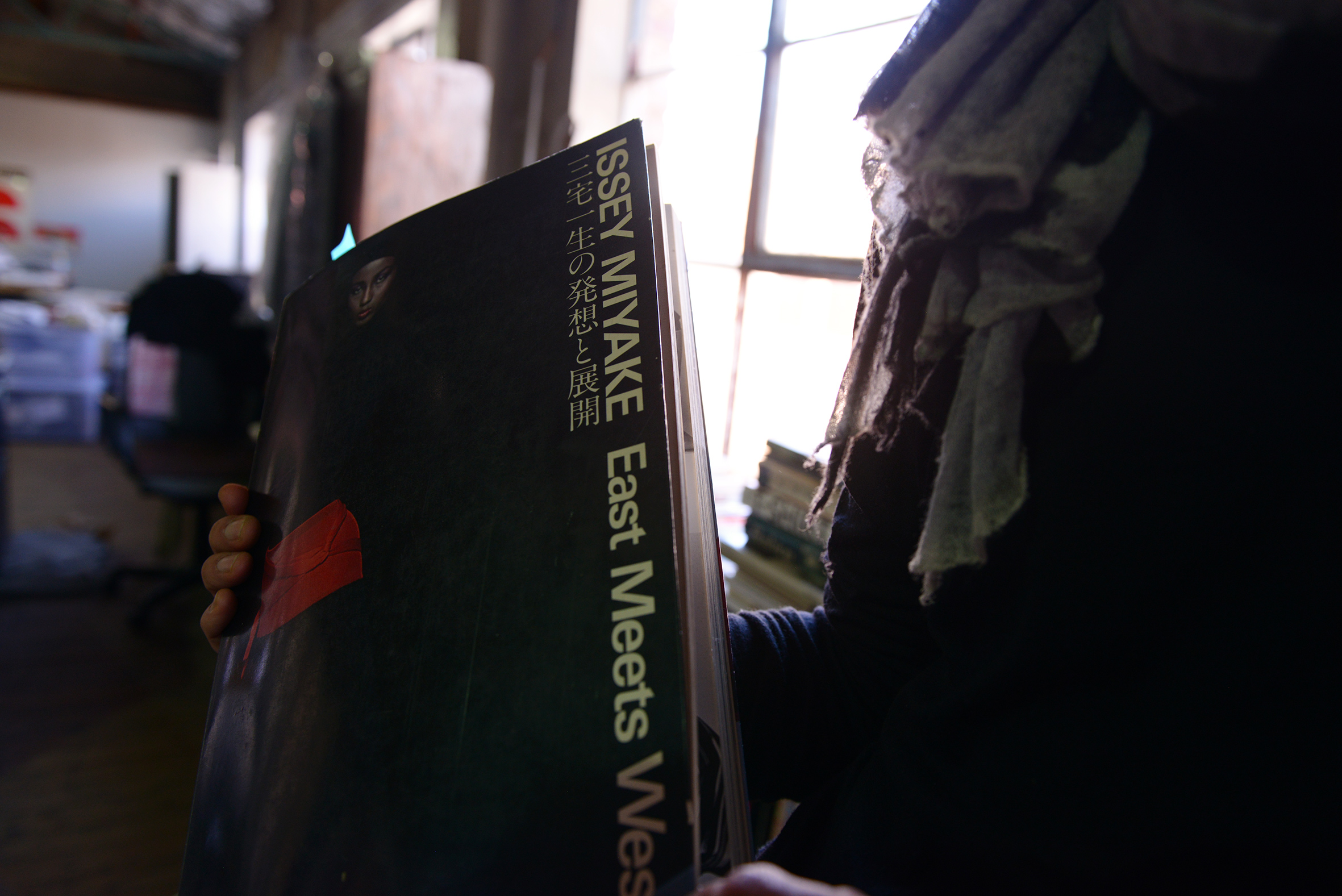
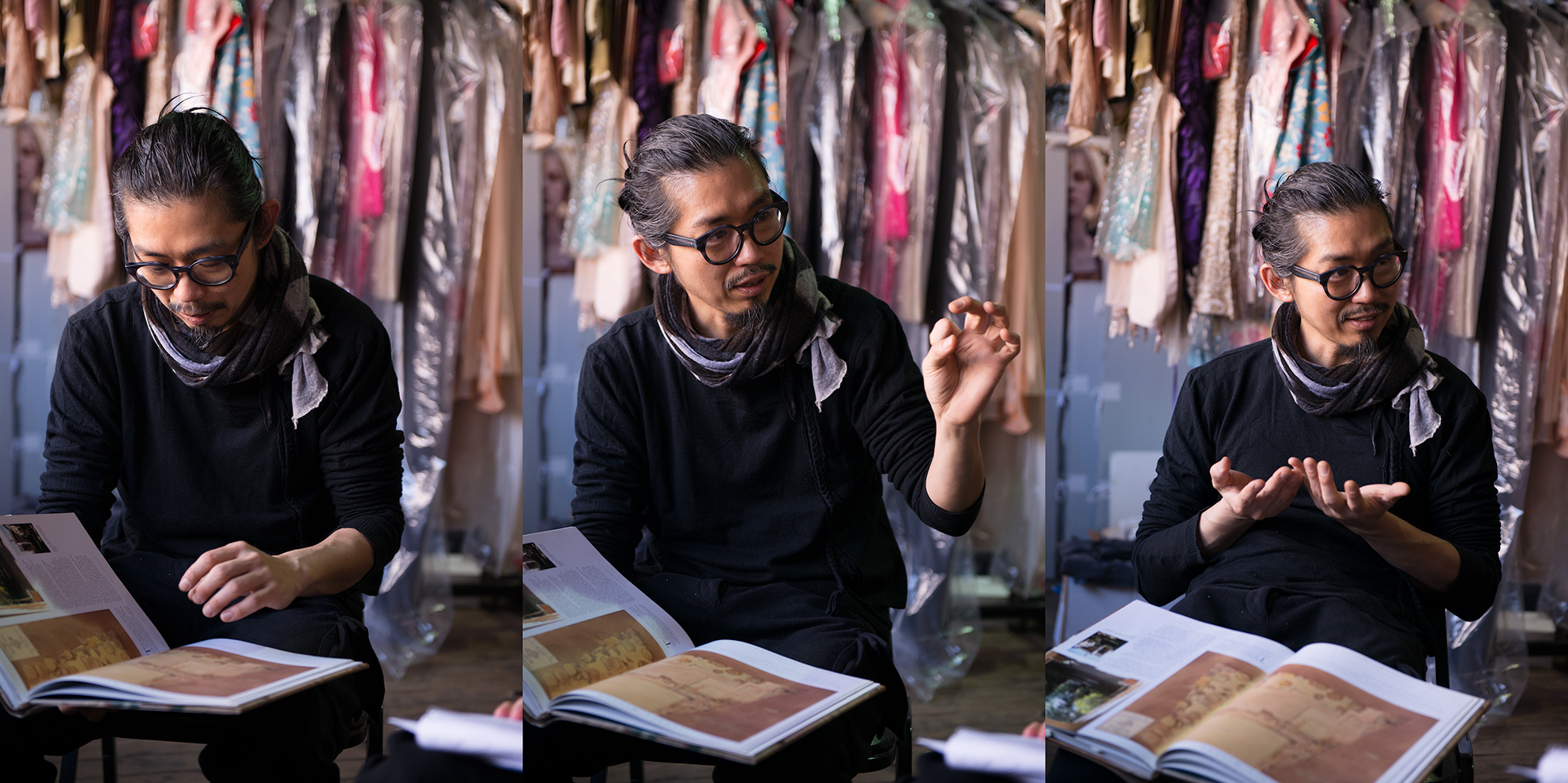 I visited a friend of mine who lives near Gosford, NSW. There is a property in that area that has been landscaped by Edna Walling and that is how I got to know her work. The way she designs is not regimented – it is very free formed. There is one garden that she designed where she just threw the seeds randomly. She seems to have a free spirit and that’s what got me interested in her work.
I visited a friend of mine who lives near Gosford, NSW. There is a property in that area that has been landscaped by Edna Walling and that is how I got to know her work. The way she designs is not regimented – it is very free formed. There is one garden that she designed where she just threw the seeds randomly. She seems to have a free spirit and that’s what got me interested in her work.
I showed one of her sketches to an artist based in Indonesia who specialises in applying to textiles. On one of my visits I presented this book to him and showed him one of the images that I liked the colour palate of and asked him to think about the colours and shapes and to enlarge it and it become a motif inspired by her work. 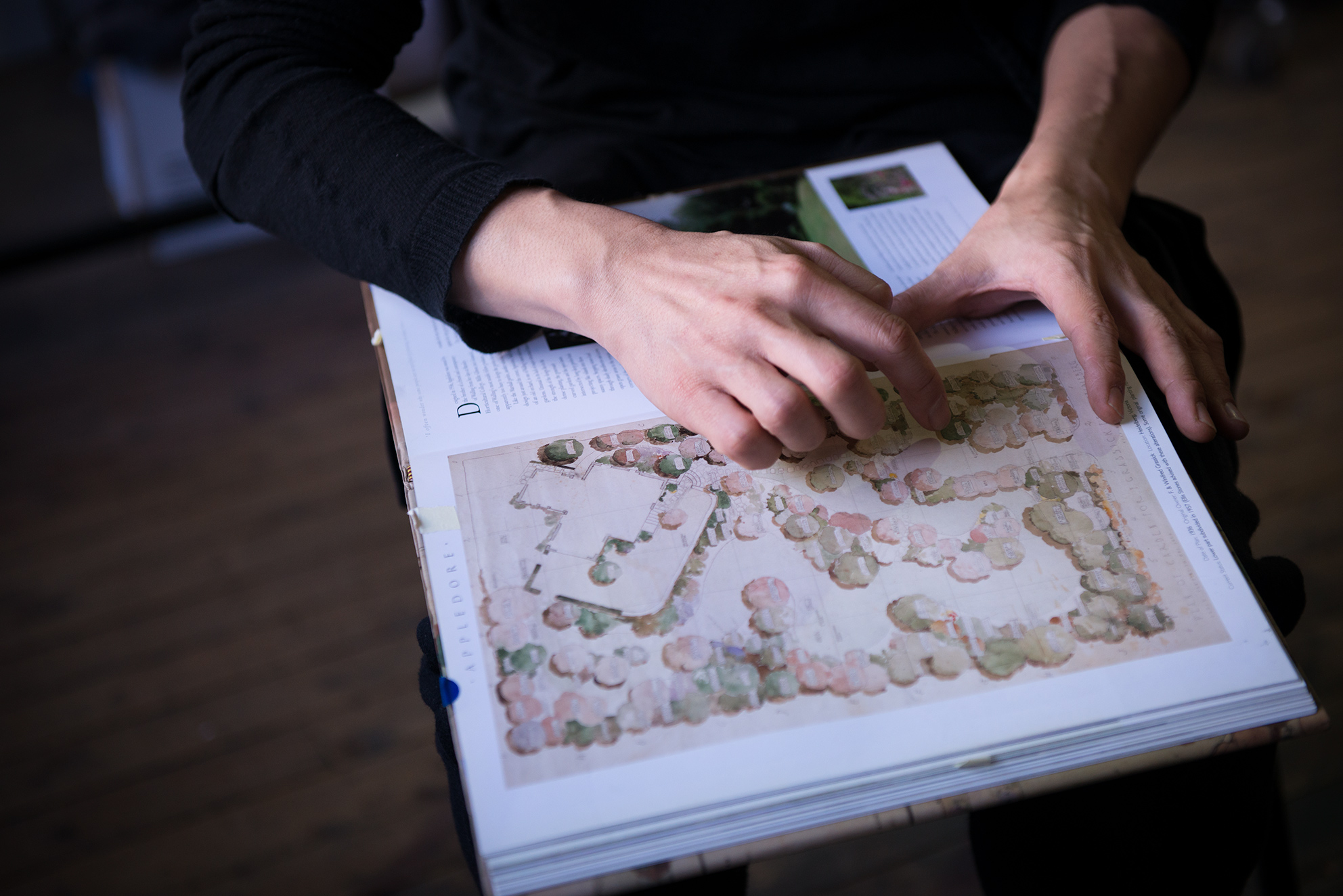 I am very random of the selection of the books that I read – often the books I buy are inspiration for my collections. The books I read are normally ones that end up on my table – they reach me.
I am very random of the selection of the books that I read – often the books I buy are inspiration for my collections. The books I read are normally ones that end up on my table – they reach me.
I have just finished Samurai Williams by Giles Miton, it was given to me by a friend of mine – Edmund Capon who was the director of the Art Gallery of NSW. This is based on a true story of an Englishman who arrived in Japan in 1611 and he eventually become Japanese, he never left and it is similar to what I have done. I arrived in Australia 300 years later and also never left.
I enjoyed the story of living in a culture that is considered opposite – East and West.I could identify with the main character in this book, as I feel more comfortable in Australia. There is now a certain disconnection between Japanese culture and myself. When I arrive in Kyoto to visit my family I do observe what is going on but I don’t feel like I am in it anymore. This book gave me a lot of energy and I feel like I need to reread it again.
I would love to explore Edmund Capon‘s book collection – it would be amazing and his knowledge in regard’s to art and history in the East is extensive. 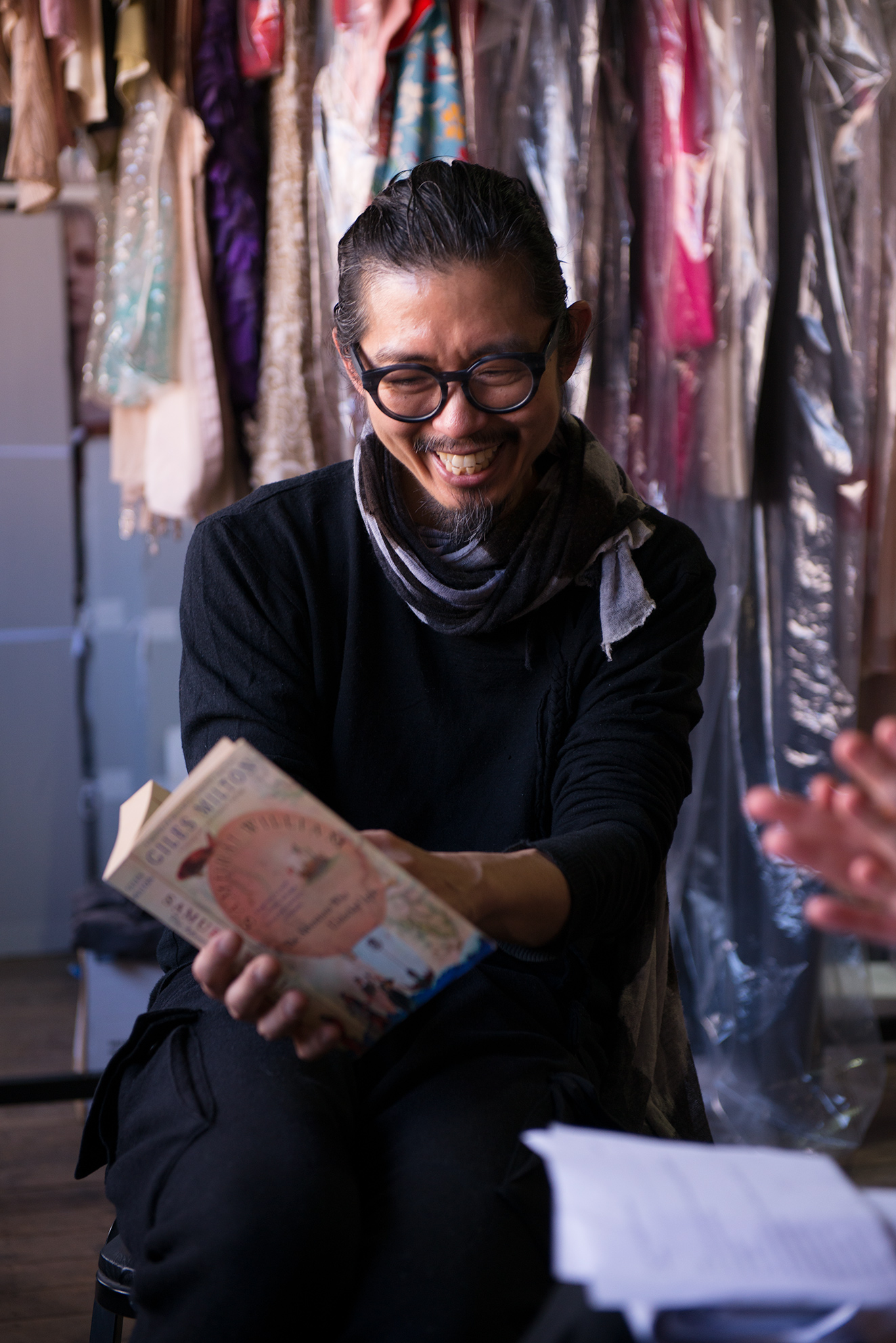 When I presented one of my first collections on the runway, which was part of Australian Week in 1997 – The History of Korean Fashion was one of my inspirations for that particular collection. I used the images for styling reference – hairstyles and layering ideas. Korean culture is in sync with Japanese culture. This book was given to me from a friend who lived in New York but would travel to Korea a few times of year for work. It is not written for foreigners so there is no English translation.
When I presented one of my first collections on the runway, which was part of Australian Week in 1997 – The History of Korean Fashion was one of my inspirations for that particular collection. I used the images for styling reference – hairstyles and layering ideas. Korean culture is in sync with Japanese culture. This book was given to me from a friend who lived in New York but would travel to Korea a few times of year for work. It is not written for foreigners so there is no English translation. 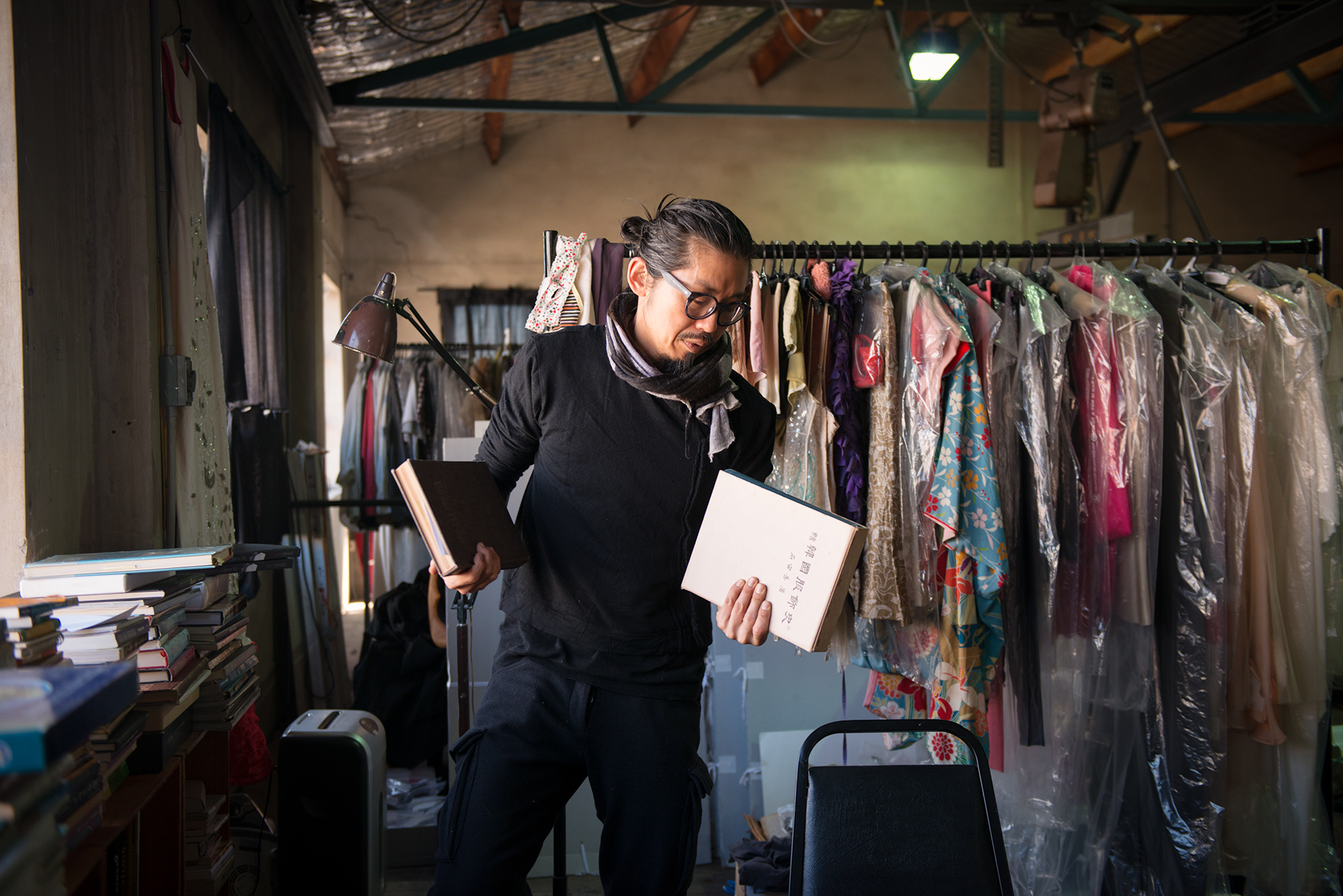
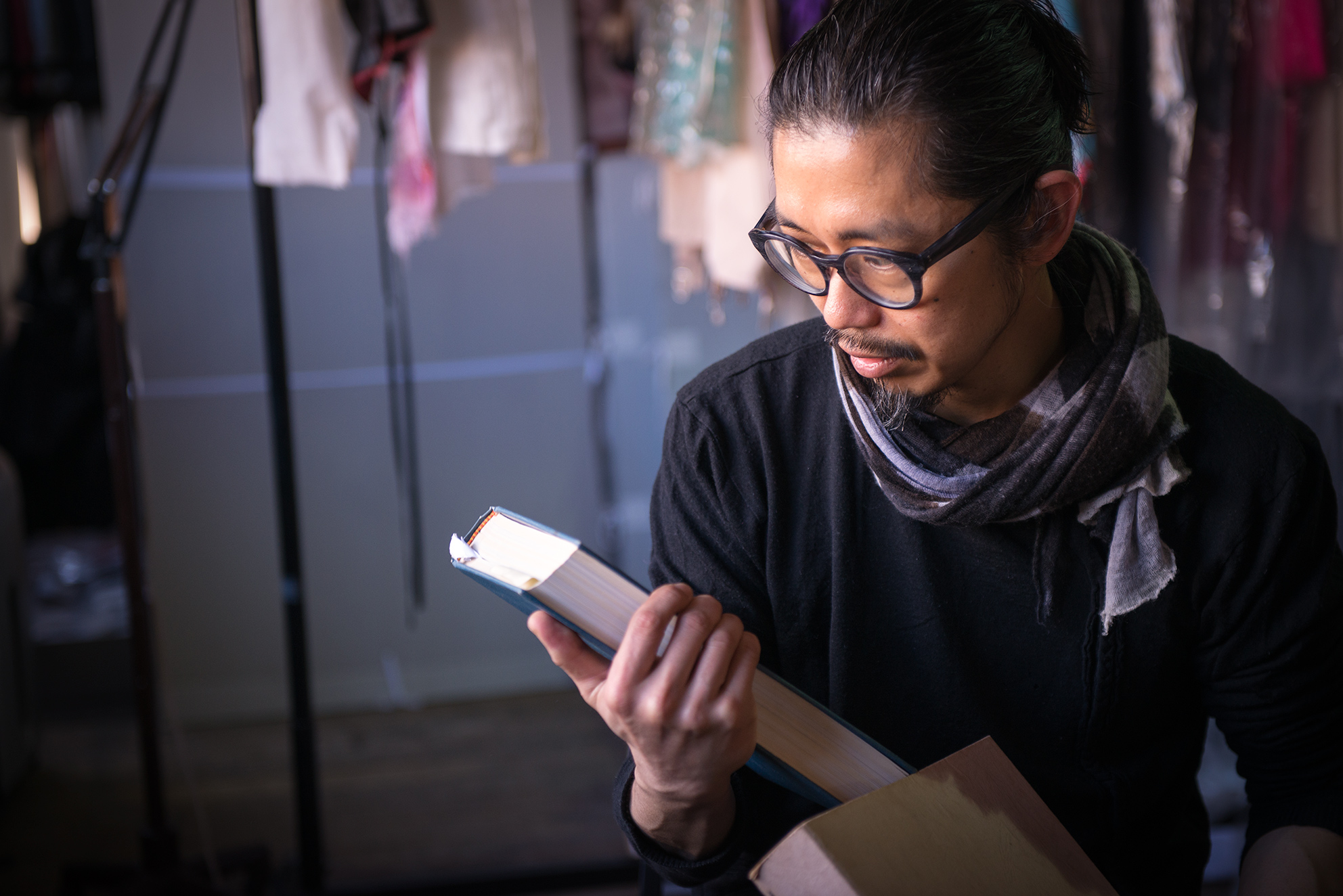 When designing the costumes for Romeo and Juliet presented by The Australian Ballet which premiered in 2007 I went to the book Samurai – Illustrated History by Mitsuo Kure. There was a battle scene in Verona – I used a reference from Roman history and also Japanese medieval history as a source of inspiration. The armour was designed from the medieval era from Japan.
When designing the costumes for Romeo and Juliet presented by The Australian Ballet which premiered in 2007 I went to the book Samurai – Illustrated History by Mitsuo Kure. There was a battle scene in Verona – I used a reference from Roman history and also Japanese medieval history as a source of inspiration. The armour was designed from the medieval era from Japan.
I read Salomé by Oscar Wilde many years ago after Graeme Murphy from the Sydney Dance Company contacted me in 1997 and asked me to design stage costumes for modern dance for Salomé. That was my first design for the stage. 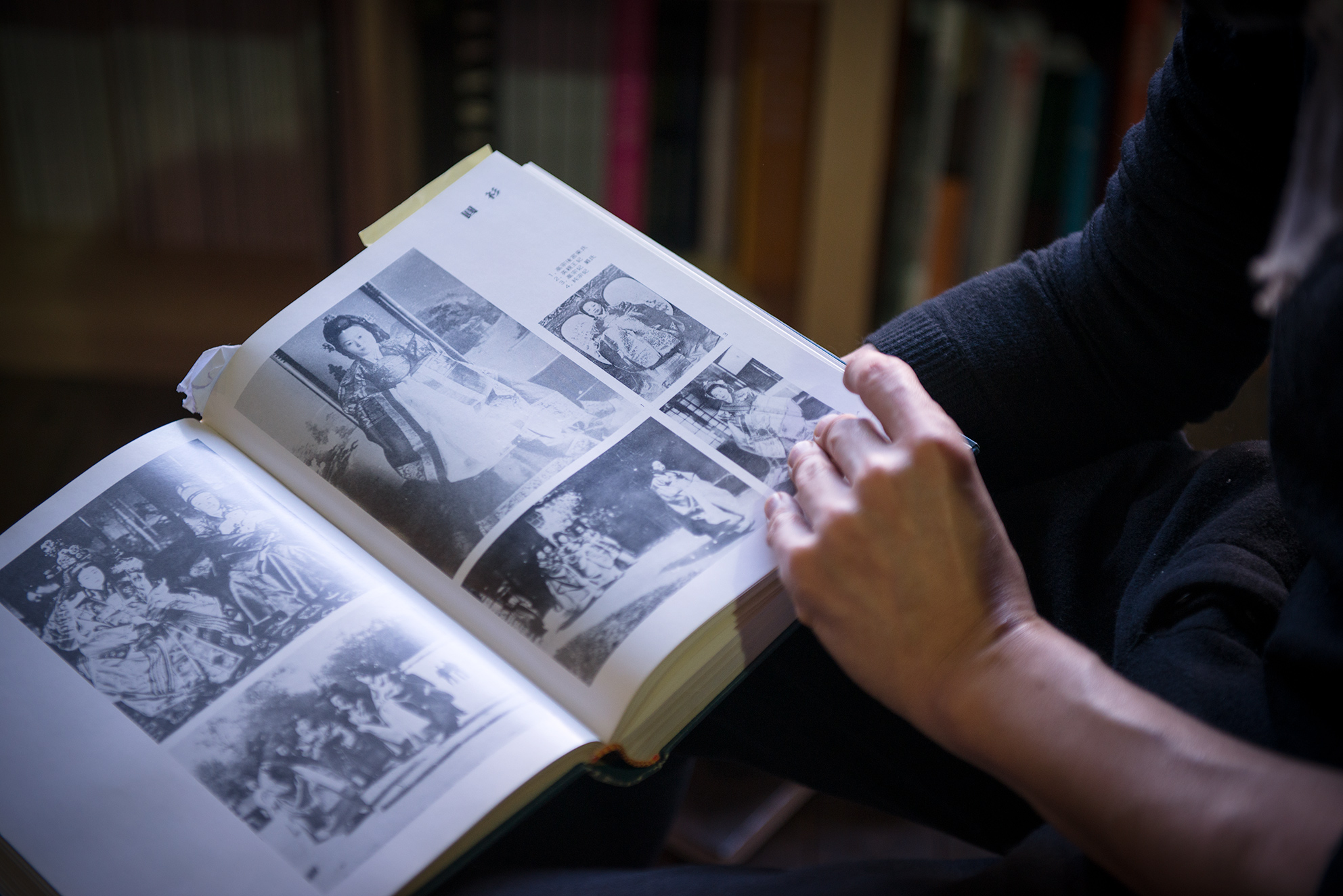
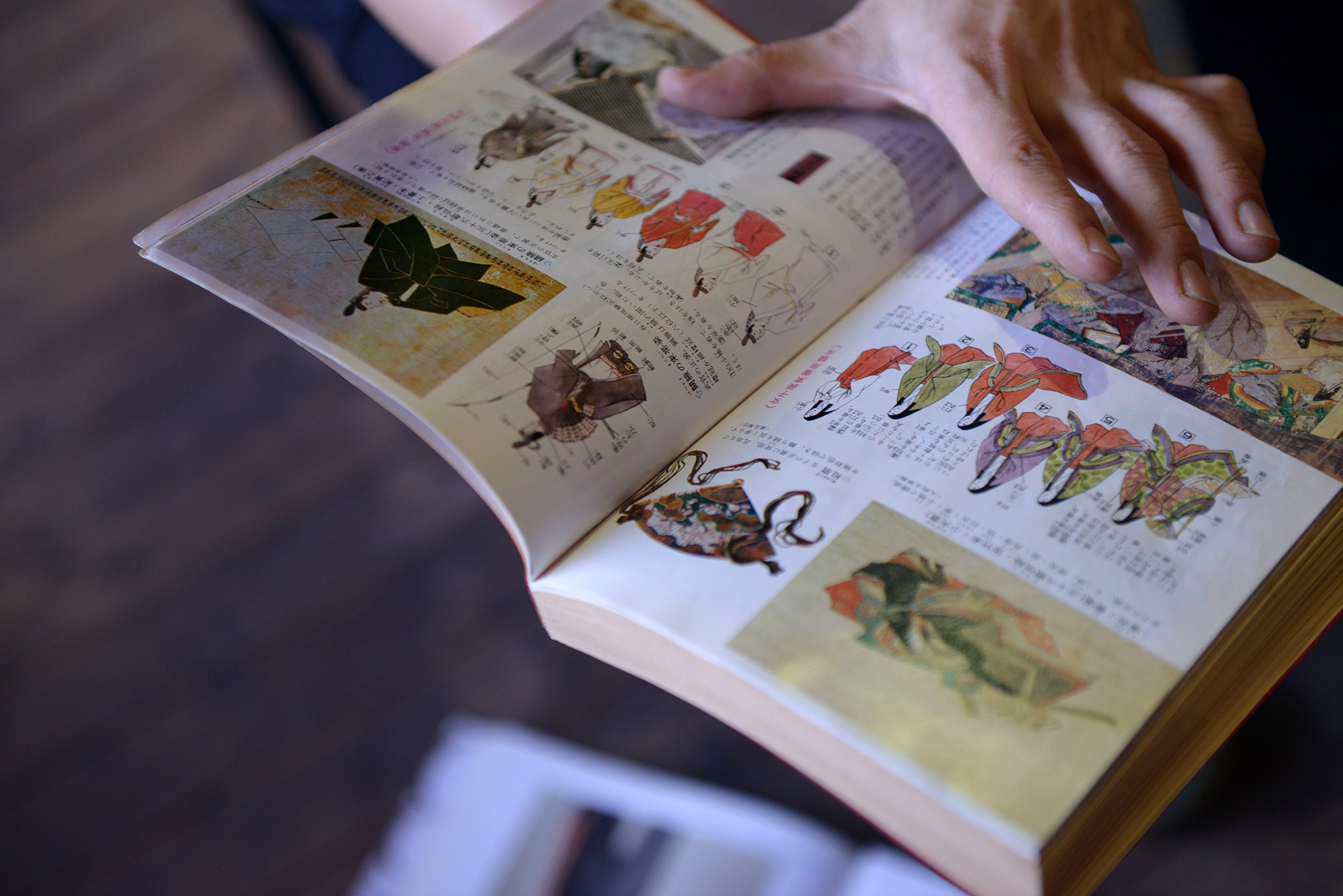 I still have textbooks that we were given to me in primary school – those books had essays within them that really influenced me. I only have a few of them here but I will be returning to my family home in Kyoto to get all of my books. One of the essays I remember reading when I was ten years old was written by Sei Shōnagon. She wrote about the seasons and how each one represented the best time of the day.
I still have textbooks that we were given to me in primary school – those books had essays within them that really influenced me. I only have a few of them here but I will be returning to my family home in Kyoto to get all of my books. One of the essays I remember reading when I was ten years old was written by Sei Shōnagon. She wrote about the seasons and how each one represented the best time of the day.
Winter – early morning
Spring – dawn
Autumn – sunset
Summer – midnight
Another textbook I have is from high school, Japanese Language and References. It is a very image based book and had a strong sense of history – and includes Japanese costume from the sixth to ninth centuries. It was a very humble book that I was obsessed with. I used to copy the images page by page and when I look back my desire to draw fashion came out around that time. During this period they would wear 12 layers of silk to make it complete – I used to draw this sort of figure all the time and colour it. Each combination of colour would represent a particular season. I loved this book and I am so glad I kept it as it also features one of my childhood hero’s – the novelist Natsume Sōseki. 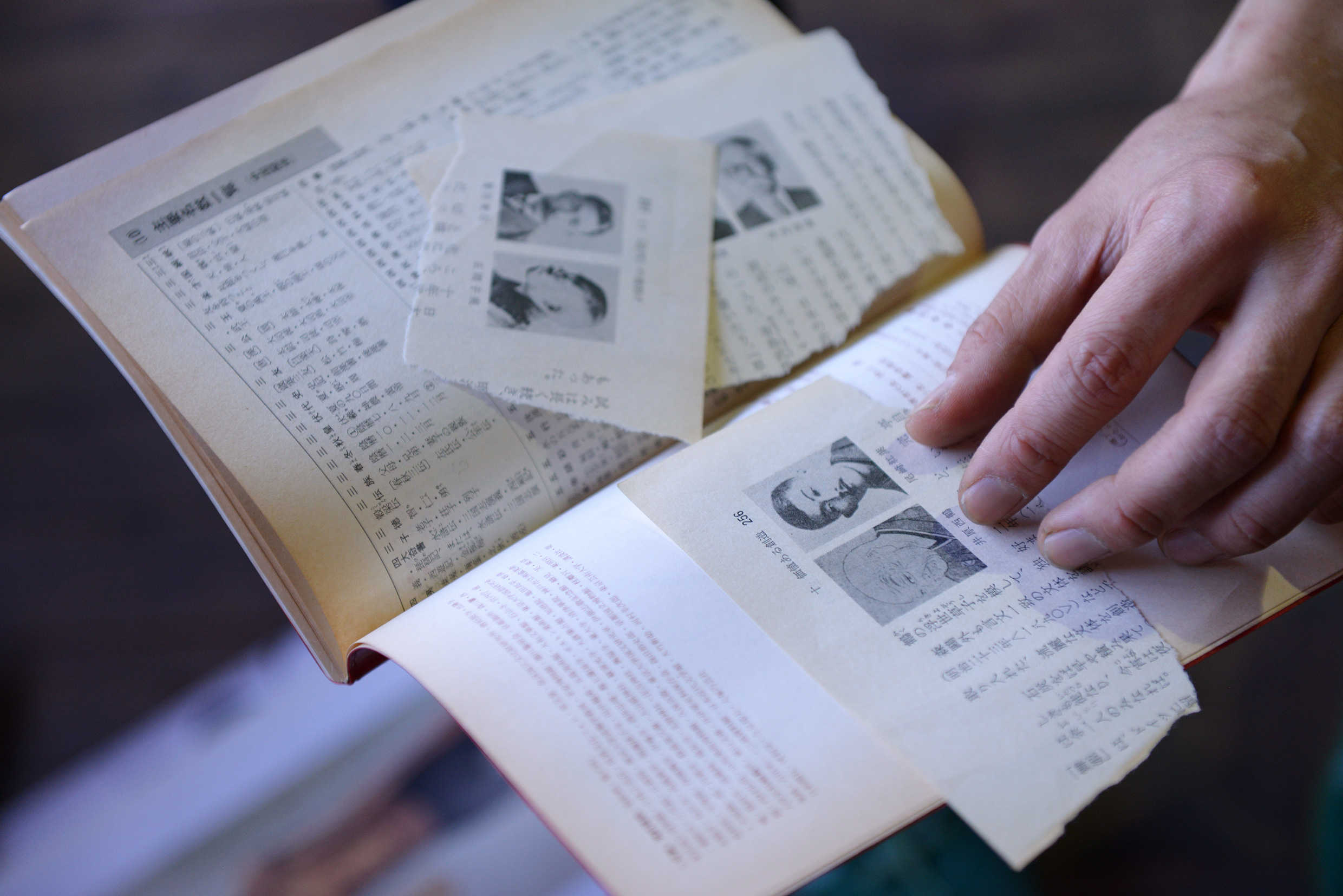 When I was younger I also enjoyed reading books by Yukio Mishina, any books he wrote I liked to tap into it. His view on Japanese culture was interesting and he went so extreme that he lost hope with Japanese culture and thought it was becoming Americanised. He ended up committing a ritual suicide later on in his life – he did it in the same manner as the Samurai with one of his right hand men beheading him with a traditional Japanese sword after he had cut his stomach.
When I was younger I also enjoyed reading books by Yukio Mishina, any books he wrote I liked to tap into it. His view on Japanese culture was interesting and he went so extreme that he lost hope with Japanese culture and thought it was becoming Americanised. He ended up committing a ritual suicide later on in his life – he did it in the same manner as the Samurai with one of his right hand men beheading him with a traditional Japanese sword after he had cut his stomach. 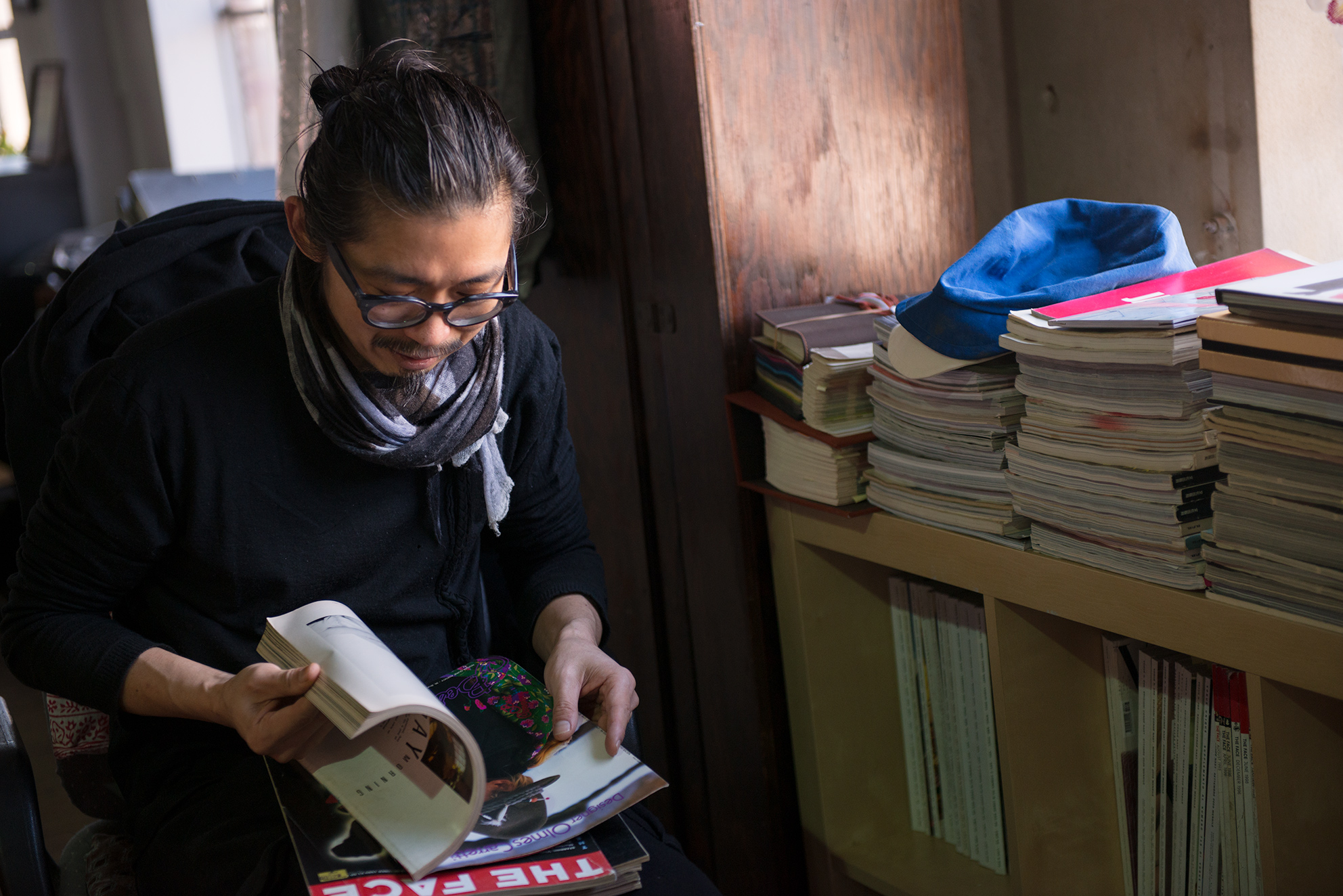
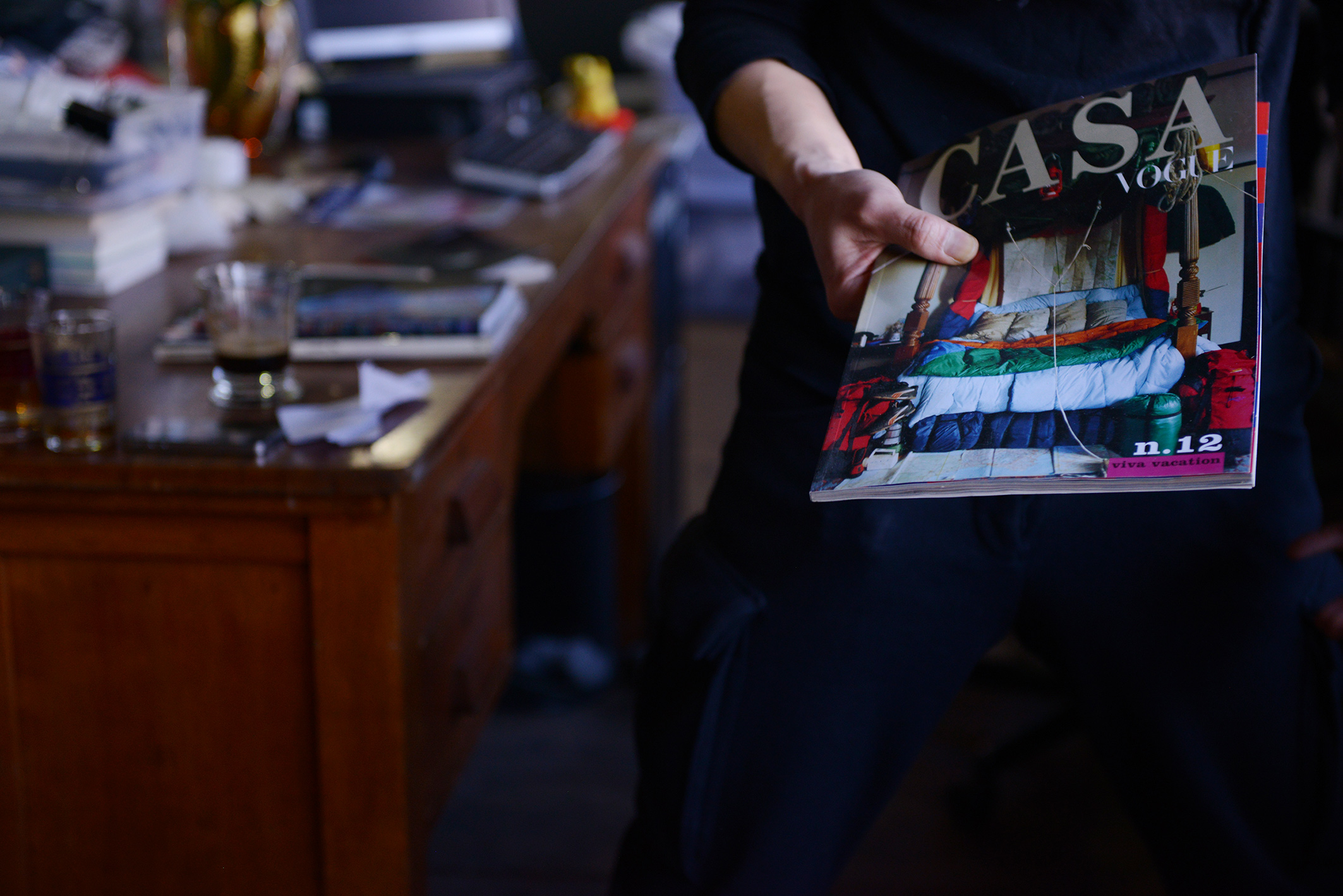 I went through recently and got rid of a lot of my magazines– a magazine is all about a certain trend as it comes out so frequently. If it doesn’t usually mean something to me, I will let it go or I will take out what I want to keep and archive it. The Face magazines I have from the 80’s have highly styled images. I like the editorial content of the Italian Vogue and the Casa Vogue. The images are beautiful and it is my favourite magazine. I find women’s fashion much more exciting men’s fashion – it speaks to me more. There is a magazine that I want to find – a first edition of the magazine Sarai – it is similar to Monocle but the content is focused on the cultural aspect of Japan and history. It is published by Gakken, who are one of the largest publishers in Japan.
I went through recently and got rid of a lot of my magazines– a magazine is all about a certain trend as it comes out so frequently. If it doesn’t usually mean something to me, I will let it go or I will take out what I want to keep and archive it. The Face magazines I have from the 80’s have highly styled images. I like the editorial content of the Italian Vogue and the Casa Vogue. The images are beautiful and it is my favourite magazine. I find women’s fashion much more exciting men’s fashion – it speaks to me more. There is a magazine that I want to find – a first edition of the magazine Sarai – it is similar to Monocle but the content is focused on the cultural aspect of Japan and history. It is published by Gakken, who are one of the largest publishers in Japan. 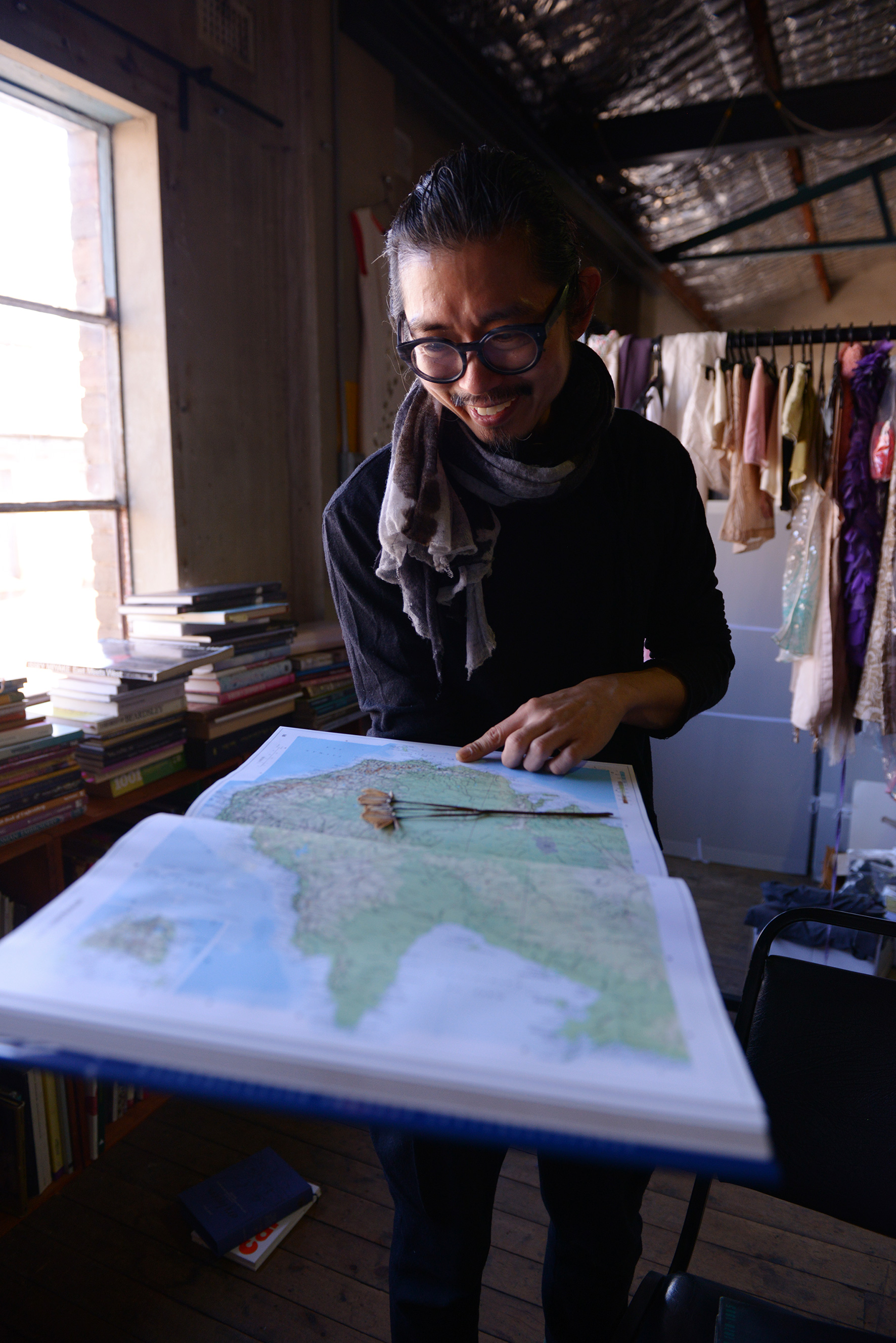
One of my most treasured books is one I purchased in Sydney over 20 years ago, Harper’s Encyclopaedia of Mystical & Paranormal Experience. When I first saw the book I flipped through the pages and the preface by the author and it intrigued me. A few subjects were appearing that I was familiar such as Zen Buddhism, as my family are Buddhists I was interested in how it is interpreted in English. I shared this book with Christiane Lehmann who is also interested in spiritualism and I feel she understands my book tastes the best. Before I started my own label I was living with Christiane and she now works for me.
One book that I like to always have in my collection is an atlas. I travel a lot and there is something grounding about staying in touch with a map. The world has changed so much even in the last 20 years and I appreciate keeping books. I love the smell and feel of books. I also prefer the old fashioned way of communication – phone conversations or meeting face to face rather than text messages. 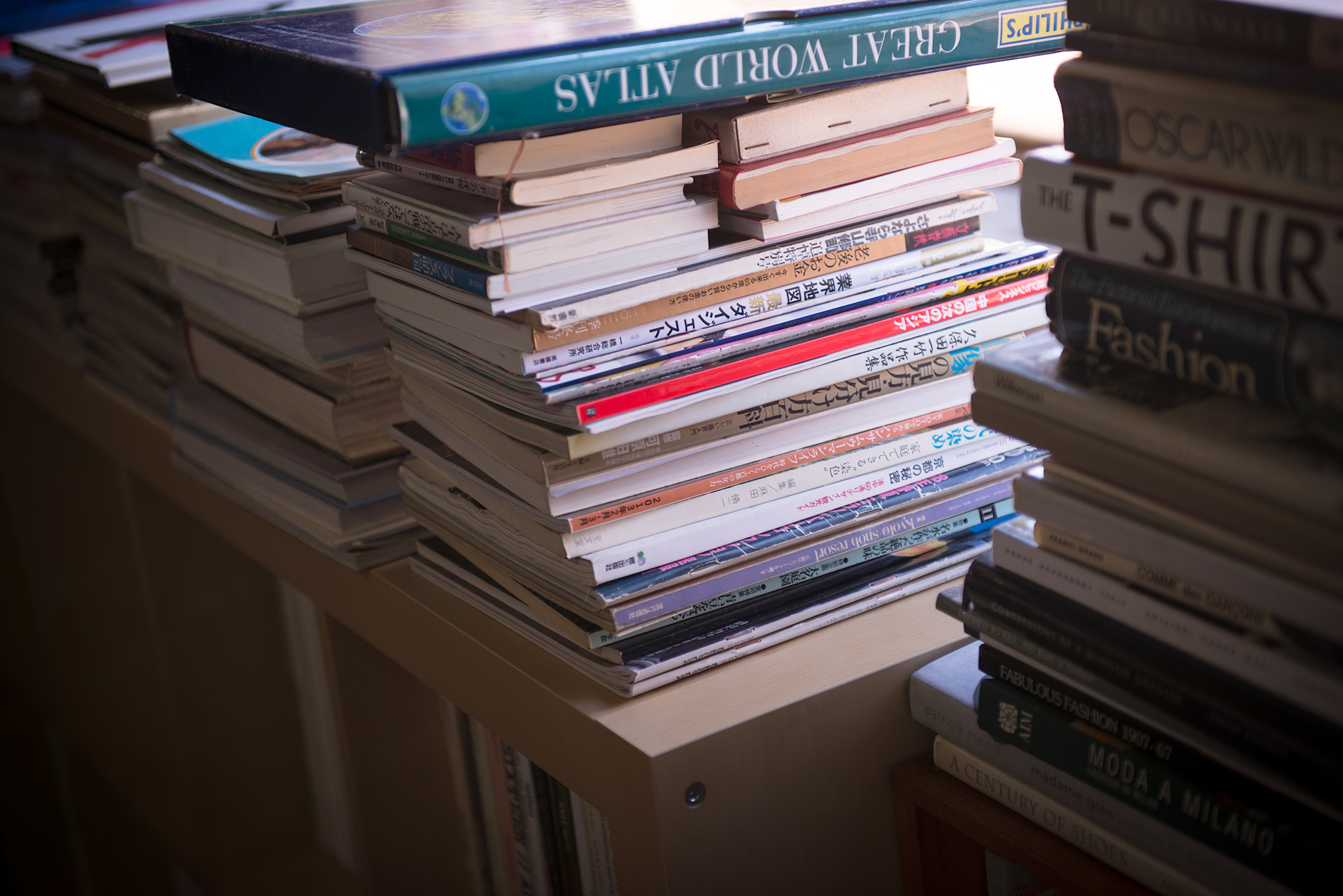
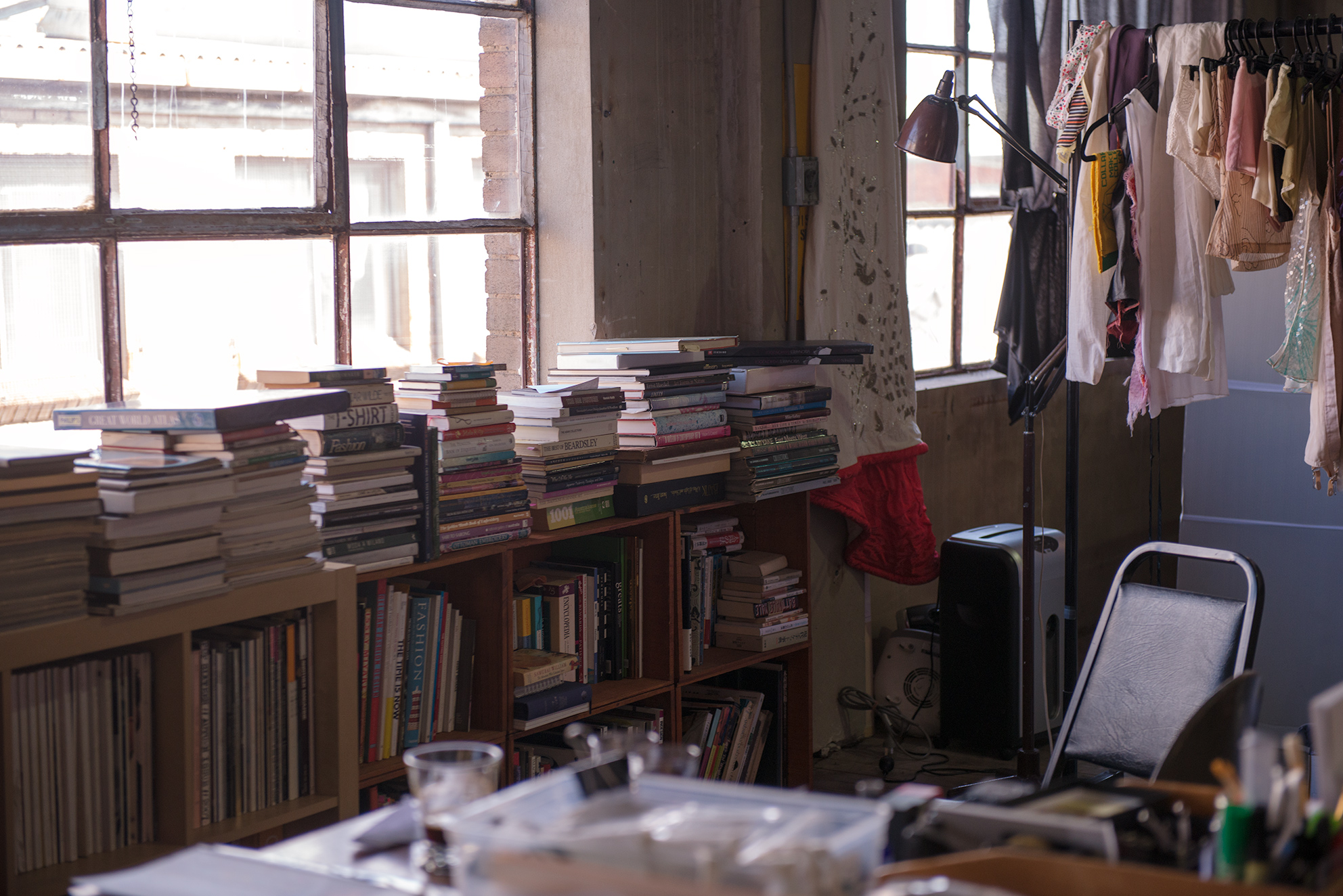 About Akira
About Akira
Born in Kyoto Japan, Akira moved to Australia in 1986 where he studied fashion design at the Sydney Institute of Technology. Since 1998, Akira has shown his collections in Paris, where he presents Spring/Summer and Autumn/Winter collections. His work has been embraced by the Australian arts sector. In 2004/05 Akira Isogawa: Printemps Ete opened at the National Gallery of Victoria.
In 2003 the Sydney Festival staged an exhibition of his garment construction techniques at Object Gallery. He has also been invited to exhibit at the Museum of Contemporary Art and has been included in the Powerhouse Museum’s Fashion of the Year retrospective. In 1999, he was named Designer of the Year and Womenswear Designer of the Year at the Australian Fashion Industry Awards in 1999.
In 2007 he was awarded the Australian Fashion Laureate Award for his contribution to the Australian Fashion Industry. In 2005 he was honoured by Australia Post and his image appeared on an ‘Australian Legend’ postage stamp. He has designed costumes for Sydney Dance Company and in 2011 he completed designing the costumes for the Australian Ballet’s production Romeo and Juliet.
Most recently Akira worked on a collaboration project and together with Woven Image launched a soft furnishing collection. 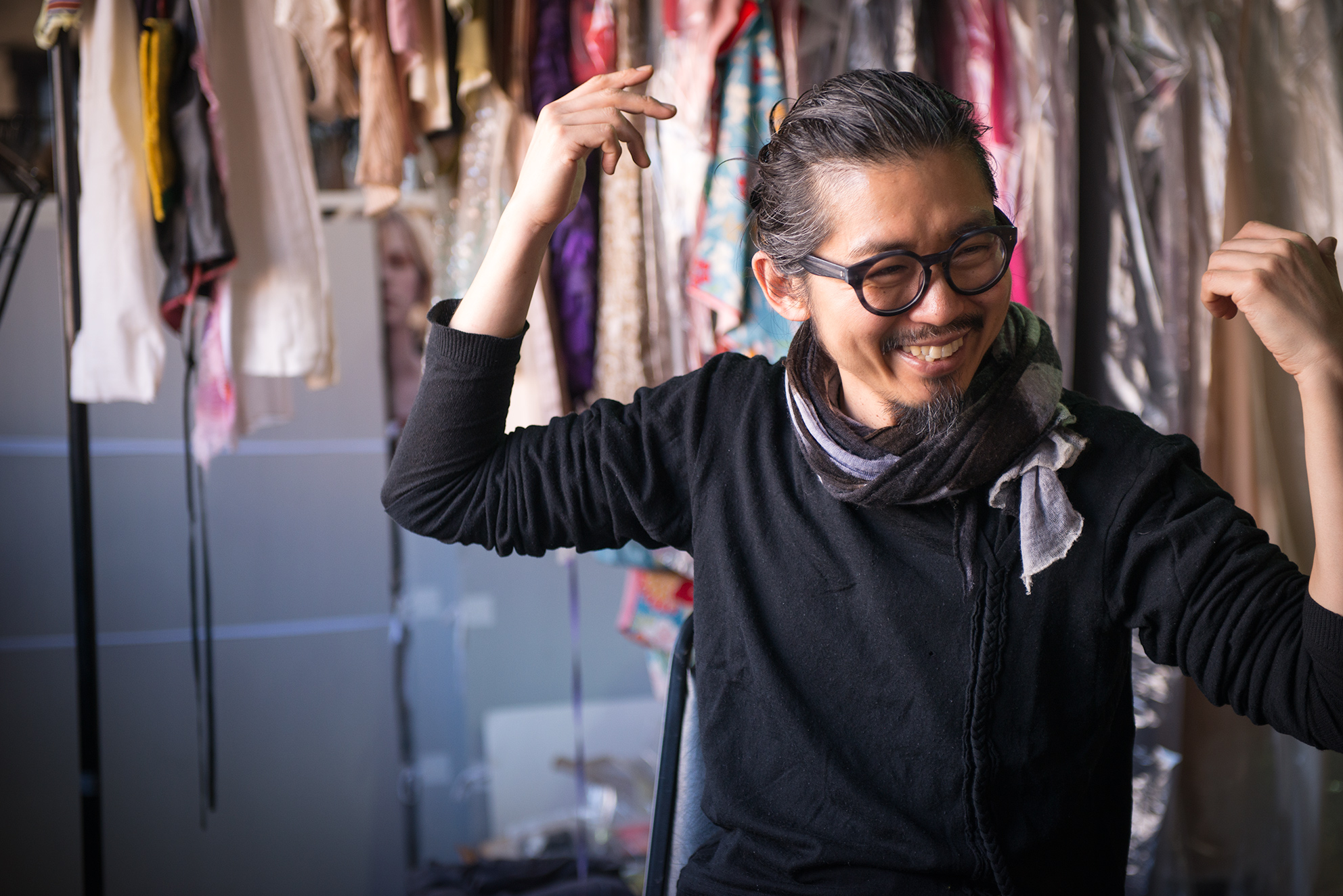 Leigh Russell and Kathy Luu chatted with Akira on the 27th August 2013. Images by Kathy Luu © Hello Bookcase 2013.
Leigh Russell and Kathy Luu chatted with Akira on the 27th August 2013. Images by Kathy Luu © Hello Bookcase 2013.
Unauthorised use and/or duplication of this material without express and written permission from this blog’s author and/or owner is strictly prohibited.

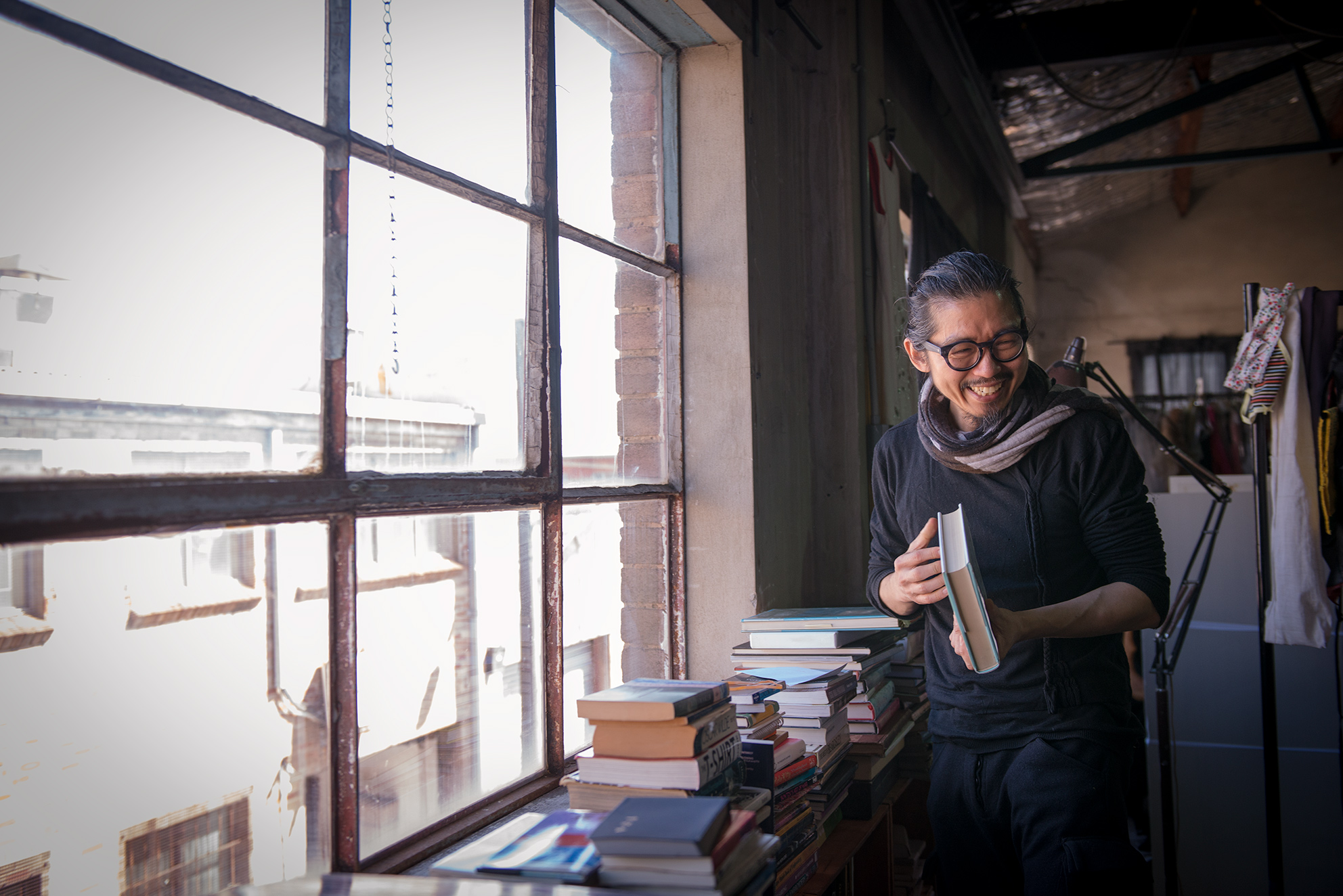
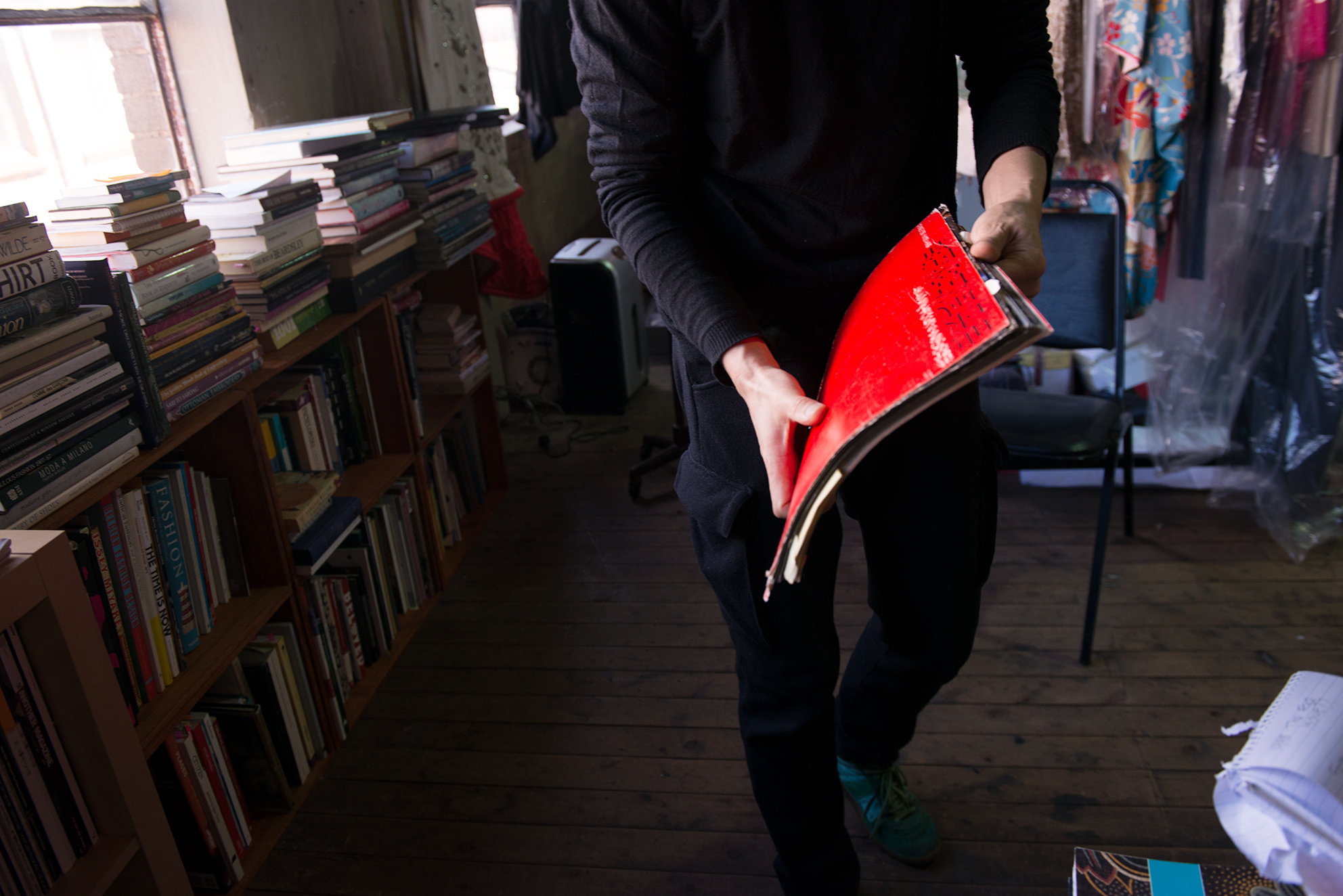
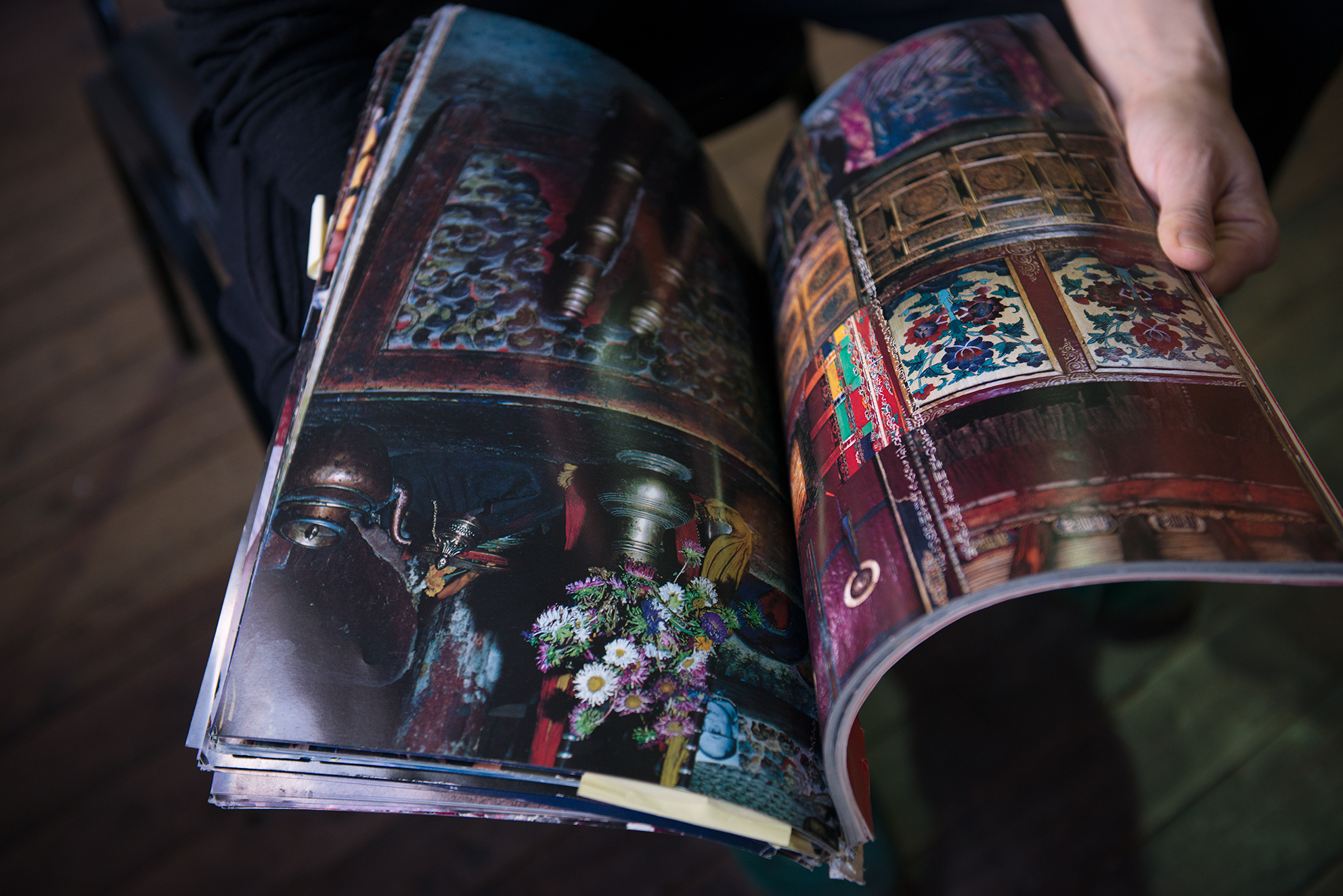
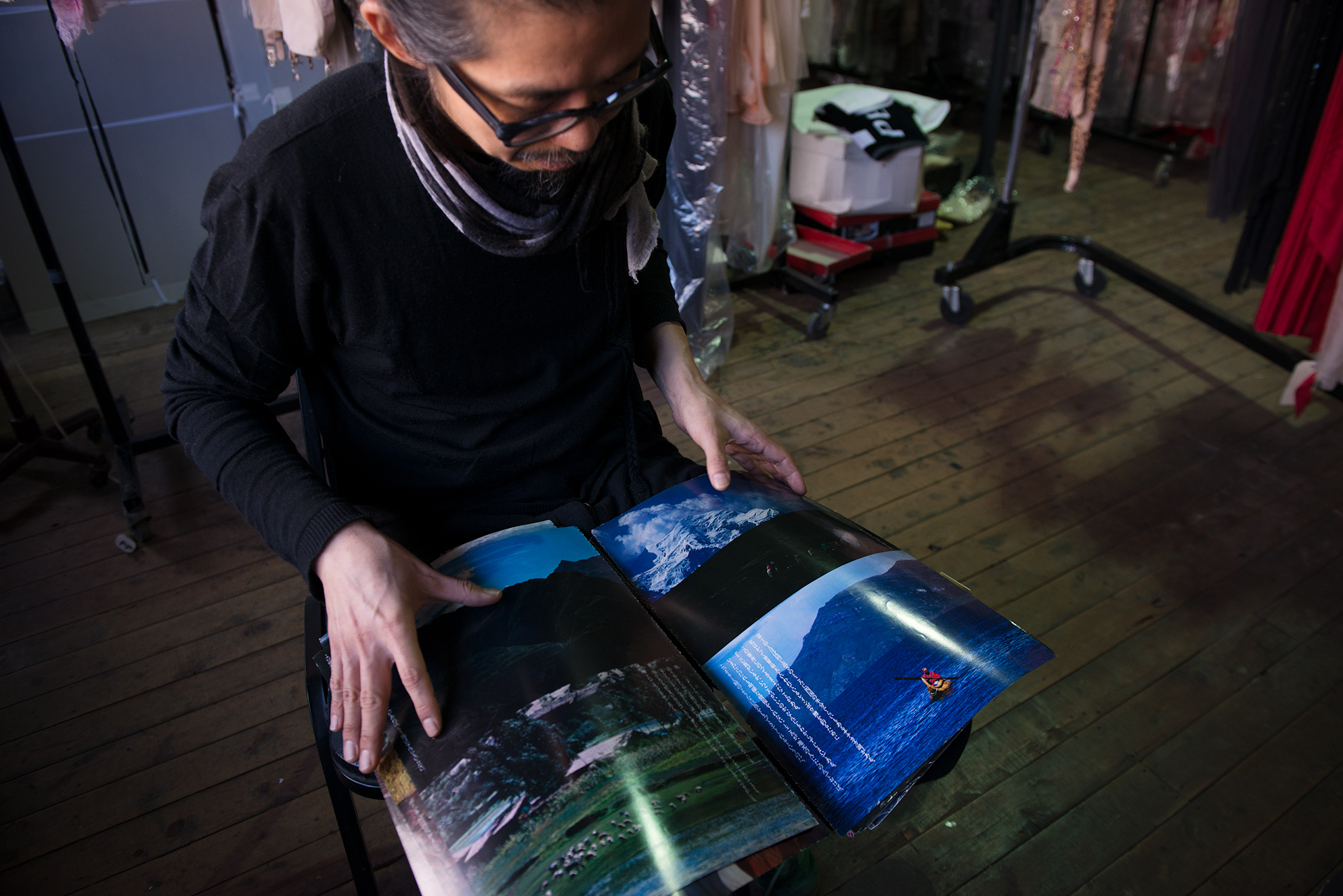
This is a truly lovely insight into the life and thinking and influences of the beautifully talented Akira. I found it absolutely fascinating and it’s led me back to memories, early reading and those threads through our life that childhood books and imaginings provide. I love your project Hello Bookcase. It’s a gift your interviewees give to us, their fellow readers, bookfondlers.
Congratulations to Leigh and Kathy.
It is a very sympathetic yet revealing interview of Akira.
I first met Akira through Marion von Adlerstein and Marion Hume when they were at Vogue together.
Marion von Adlerstein was a great admirer and “wearer” of Issey Miyake and also very taken with Akira’s designs.
I then met him again during the very first Australian Fashion week when I was the representative of Qantas, an early sponsor.
The interview has captured Akira’s introspection and also illustrates what he draw’s on for inspiration. Very insightful!
His designs for Graham Murphy’s Salome and later The Australian Ballet’s Romeo and Juliet clearly illustrates his ability to design specifically and creatively for both contemporary and classical choreography.